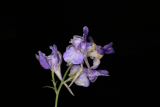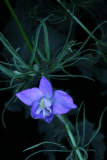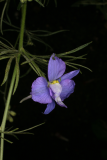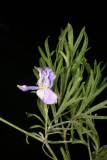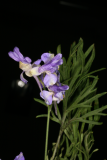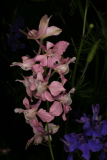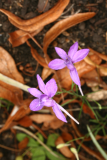Additional notes (click to expand)
Medicinal
All parts - especially seeds - have sedating and dream-inducing properties
Wink, Michael & Ben-Erik van Wyk (2008). Mind-Altering and Poisonous Plants of the World. Timber Press
All parts - especially seeds - have sedating and dream-inducing properties.
Wink, Michael & Ben-Erik van Wyk (2008). Mind-Altering and Poisonous Plants of the World. Timber Press
Nomenclature
Synonym of Delphinium ajacis (07/01/21) FDA
Plants of the World online, Kew Science http://www.plantsoftheworldonline.org/
link
Other use
All parts - especially seeds - have sedating and dream-inducing properties
Wink, Michael & Ben-Erik van Wyk (2008). Mind-Altering and Poisonous Plants of the World. Timber Press
Phytochemistry
Active Principle. All parts especially seeds: delcosine, lycoctonine and other terpene alkaloids.
Wink, M. (2009). Mode of Action and toxicology of plant toxins and poisonous plants. Mitt. Julius Kuhn-Inst. 421:93-111.
Toxicity
Class 1a: Extremely hazardous: alkaloids affect Na+ channels and neuroreceptors, with sedating and
dream inducing properties, substantial ingestion causes nausea, gastroenteritis, arrhythmia, excitations, spasms, respiratory arrest.
Wink, M. (2009). Mode of Action and toxicology of plant toxins and poisonous plants. Mitt. Julius Kuhn-Inst. 421:93-111. p.98
Geographical distribution
- Asia-Temperate, Western Asia, Cyprus
- Asia-Temperate, Western Asia, Turkey
- Europe, Eastern Europe, Ukraine
- Europe, Southeastern Europe, Albania
- Europe, Southeastern Europe, Bulgaria
- Europe, Southeastern Europe, Greece
- Europe, Southeastern Europe, Italy
- Europe, Southeastern Europe, Romania
- Europe, Southeastern Europe, Yugoslavia
- Europe, Southwestern Europe, France
Consolida ajacis (L.) Schur
Family: RANUNCULACEAEGenus: Consolida
Species: ajacis (L.) Schur
Common names: Giant Larkspur; Rocket Larkspur
Distribution summary: Mediterranean
Habit: Annual
Hardiness: H5 - Hardy; cold winter
Garden status: Not currently grown
Flowering months: July, August
Reason for growing: Medicinal, toxic
